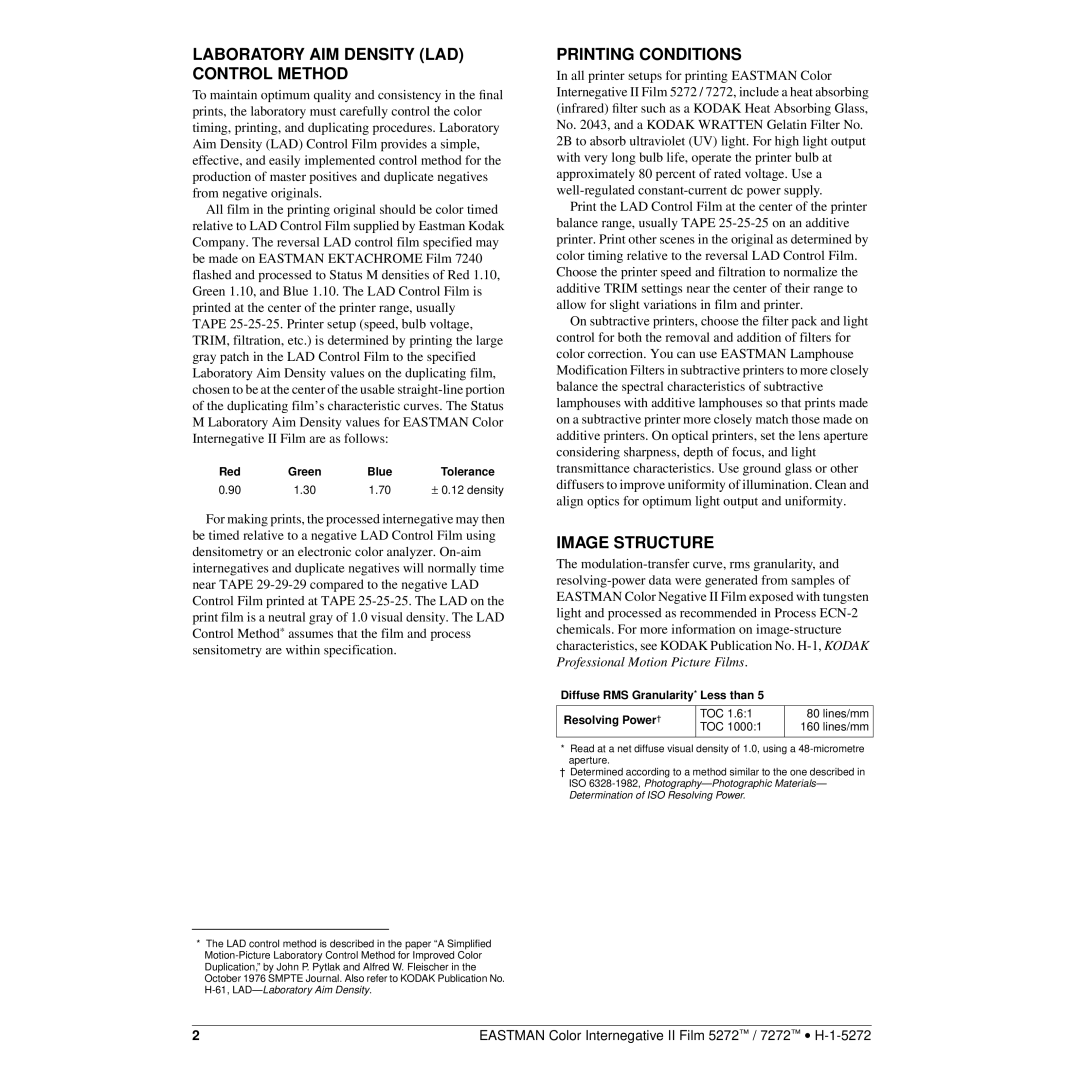
LABORATORY AIM DENSITY (LAD) CONTROL METHOD
To maintain optimum quality and consistency in the final prints, the laboratory must carefully control the color timing, printing, and duplicating procedures. Laboratory Aim Density (LAD) Control Film provides a simple, effective, and easily implemented control method for the production of master positives and duplicate negatives from negative originals.
All film in the printing original should be color timed relative to LAD Control Film supplied by Eastman Kodak Company. The reversal LAD control film specified may be made on EASTMAN EKTACHROME Film 7240 flashed and processed to Status M densities of Red 1.10, Green 1.10, and Blue 1.10. The LAD Control Film is printed at the center of the printer range, usually TAPE
Red | Green | Blue | Tolerance |
0.90 | 1.30 | 1.70 | ± 0.12 density |
For making prints, the processed internegative may then be timed relative to a negative LAD Control Film using densitometry or an electronic color analyzer.
*The LAD control method is described in the paper “A Simplified
PRINTING CONDITIONS
In all printer setups for printing EASTMAN Color Internegative II Film 5272 / 7272, include a heat absorbing (infrared) filter such as a KODAK Heat Absorbing Glass, No. 2043, and a KODAK WRATTEN Gelatin Filter No. 2B to absorb ultraviolet (UV) light. For high light output with very long bulb life, operate the printer bulb at approximately 80 percent of rated voltage. Use a
Print the LAD Control Film at the center of the printer balance range, usually TAPE
On subtractive printers, choose the filter pack and light control for both the removal and addition of filters for color correction. You can use EASTMAN Lamphouse Modification Filters in subtractive printers to more closely balance the spectral characteristics of subtractive lamphouses with additive lamphouses so that prints made on a subtractive printer more closely match those made on additive printers. On optical printers, set the lens aperture considering sharpness, depth of focus, and light transmittance characteristics. Use ground glass or other diffusers to improve uniformity of illumination. Clean and align optics for optimum light output and uniformity.
IMAGE STRUCTURE
The
Diffuse RMS Granularity* Less than 5
Resolving Power† | TOC 1.6:1 | 80 lines/mm | |
TOC 1000:1 | 160 lines/mm | ||
| |||
|
|
|
*Read at a net diffuse visual density of 1.0, using a
†Determined according to a method similar to the one described in ISO
2 | EASTMAN Color Internegative II Film 5272™ / 7272™ ∙ |
